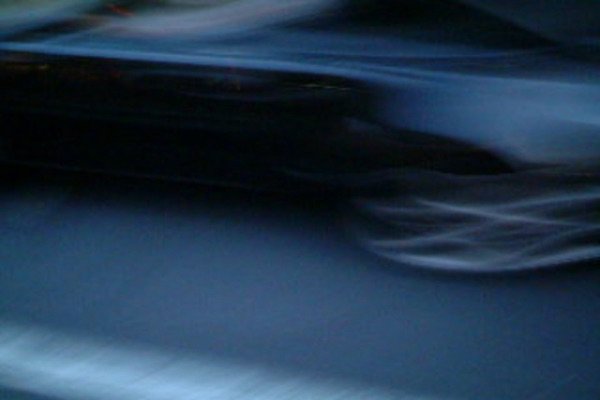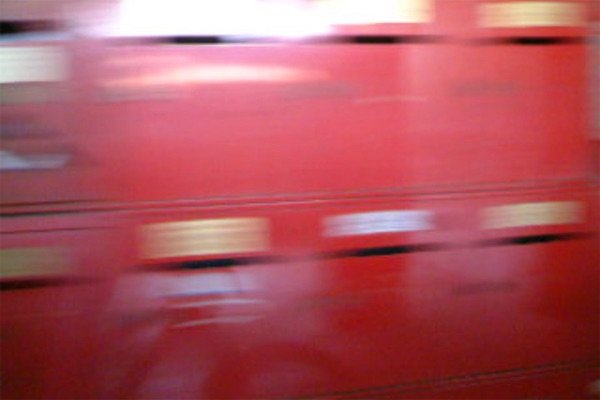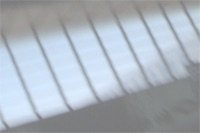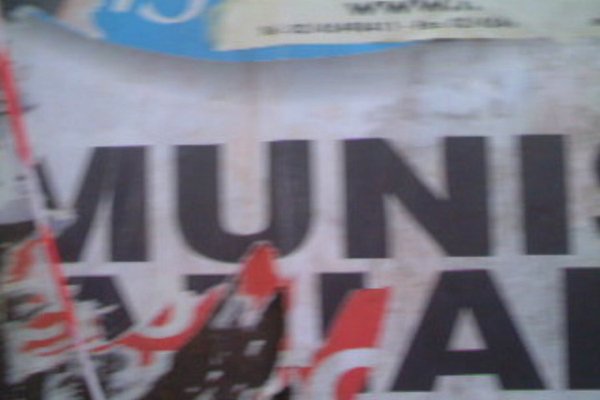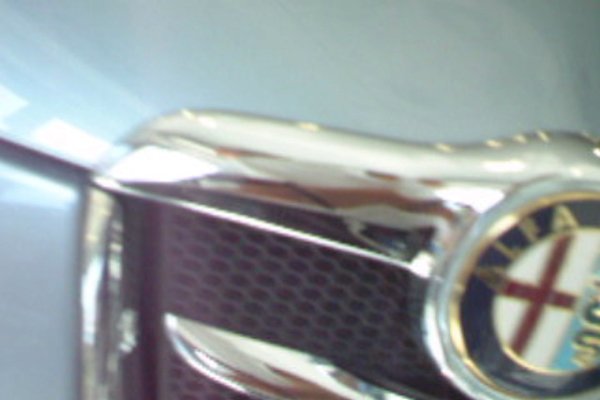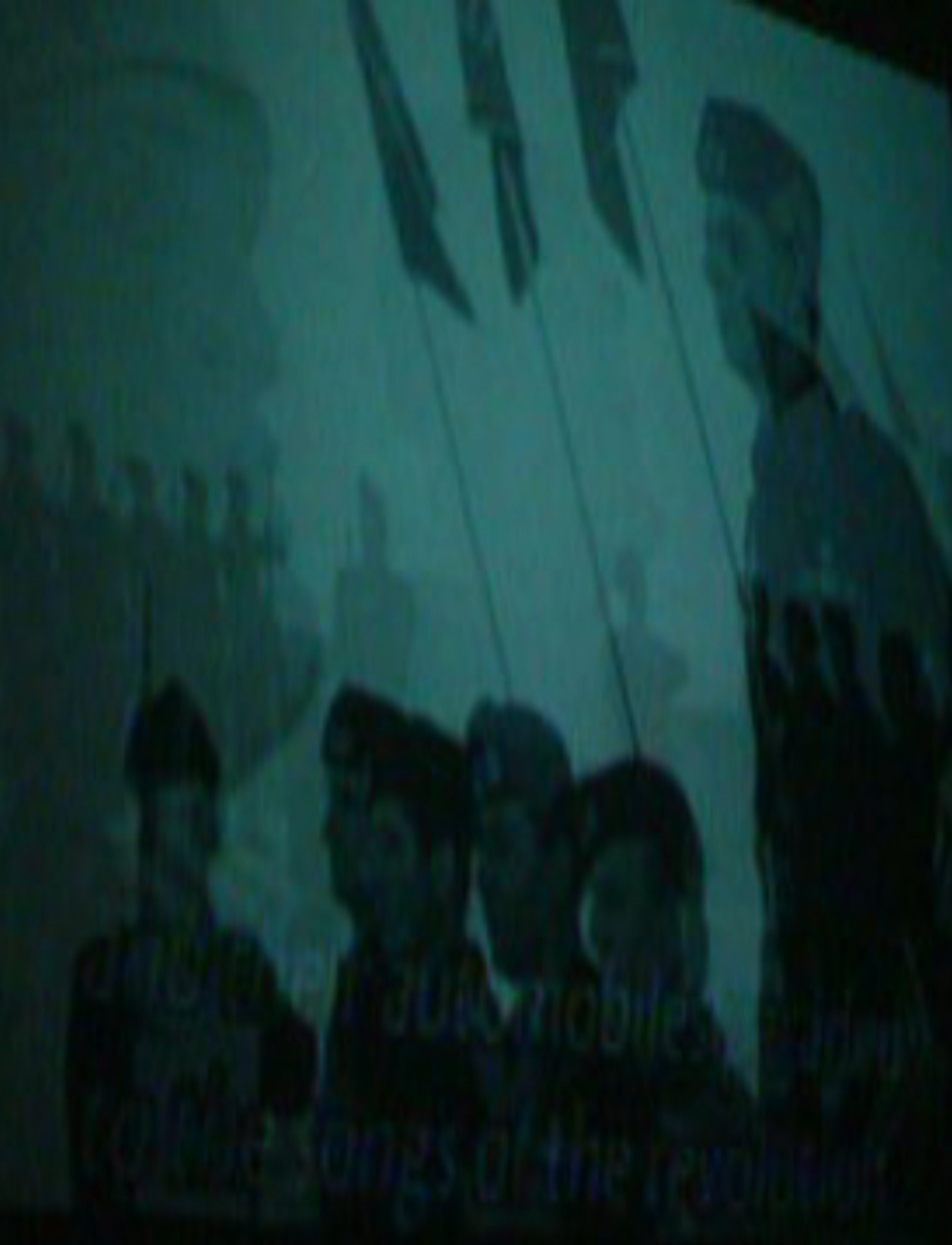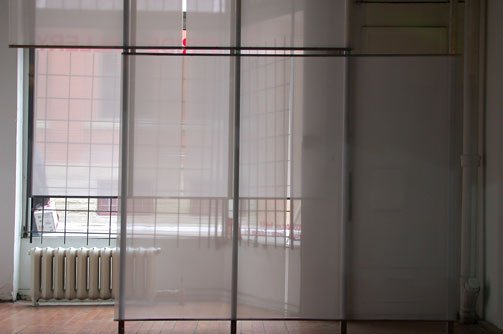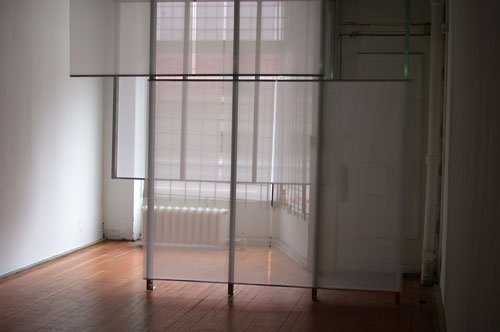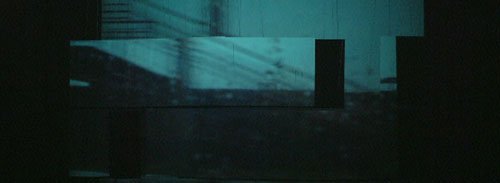ROMALUX NOTATIONS FROM THE PRIX DE ROME CANADA COUNCIL FOR THE ARTS ANDREW KING WITH ANGELA SILVER
PRIX DE ROME FOR CANADA 2003-04
a research, mapping, film, curation and an installation project that explores the relation between movement and space through the making of a curated, constructed cinematic and spatial room. the rome work can be separated into three clear phases: notation, assemblage and projection. the notation was completed in romeas a documentation of moving through the city over the period of a year. an installation project that explores the relation between movement and space through the making of a curated, constructed room.
1500 notations through-out several months in rome, the effort has gone into making several hundred filmic notations in and around the historic and contemporary gates to and from the city. this was achieved through continuously moving through the city and recording apparently salient moments in that passage. all the filmic notations are about movement in some way: there are no ‘stills’. these are short, sometimes very short, low resolution digital video files, numbered in the order of recording. currently there are about 300 clips, between 1 and 30 seconds long. we project having 500 by the end of august. these notations are seen as akin to walter benjamins convolutes from his arcades project, with digital film fragments instead of text. in the same way the convolutes can be seen as fragments of an infinite number of potential fictional narratives, the notations are seen as the raw material for a potentially infinite number of fictional documentaries. the clips vary in levels of clarity and abstraction. some are straight-forward banal images of bucolic settings, some very abstract images of moving across a gate or wall surface at speed, some a train moving into and out of the frame, changing the scale of perceived space, some are moving into and out of gate conditions. we’ve looked at the historic gates, accidental gates, various train stations, the main airport, the appian way. we’ve documented several journeys into and out of rome.
some of the clips were made with certain references in mind: neo-realist italian cinema, the commedia d’elle arte spectacle, the imperial triumphal sequence, cicero’s journey into and out of exile, the final scene in fellini’s roma, etc. we tried to identify specific qualities of each space and try to articulate them in the individual film fragment.
300 assemblages phase two of the work entails reconstituting the clips in a series of sequences that explore a specific aspect of an architectural experience. these resultant compositions become short cinegraphic essays, non-narrative fictions of the city. for example the fiction of ‘surface’ becomes a several minute long series of shots of various surface conditions recorded at various speeds: the aurelian wall at 15km/hr, a railway tunnel at 150 km/hr.
10 projections the projection phase is the making of a scenographic lens on and through which the 10 films are viewed in the gallery space. the position is that an inverted scenography occurs: the surface on which the films are projected are part of the critical position of the work, a conceptualized, composed, fabricated and installed element that mediated between viewer and film, gallery and image.
ROMALUX has been exhibited 5 times across Canada, has appeared in books and journals, and has been the subject of over a dozen lectures in Canada and abroad.
prix de rome submission 2003, fabricated aluminium plate, plexiglass and wood inserts, sculptural analogues, original photography, hand bound book. successful submission
/GREGORY ELGSTRAND
THE ROMALUX PROJECT
I
In and about Andrew King and Angela Silver’s ROMALUX, executed in and about Rome over in 2003 and 2004, lurks the figure of German philosopher Walter Benjamin. From 1927 until his death in 1940, Benjamin worked assiduously on his Arcades Project, an unfinished monumental study of nineteenth century Paris. Benjamin’s extant work exists as a collection of written fragments and quotations from diverse historical, literary and political sources gathered together under general themes in a series of convolutes that range from such topics as fashion, theories of knowledge and progress to iron construction, Karl Marx and Victor Hugo. Susan Buck-Morss observes that Benjamin employed the basic framework for his methodological approach to the Arcades Project in his 1925 essay, Naples in which «the images are the phenomena – buildings, human gestures, spatial arrangements are ‘read’ as a language in which a historical transient truth (and the truth of historical transiency) is expressed concretely, and the city’s social formation becomes legible within perceived experience.» Benjamin’s images of Naples stand as collections of «objective expressions» rather than mere «subjective impressions» - likewise King and Silver’s shortish video images (1 to 30 seconds in duration) of Rome function similarly.
II
«[W]ithin a recent emphasis that privileges process and imagines the city as an accumulation of collective uses of the built environment within the spatial relations determined by capital, there is a move toward documentation and critical art projects which emphasize use - both within architecture and within urban phenomena, notably by those brought on by globalization. Rather than intending simply to reveal underlying "spatial realities", this new city art is producing a proliferation of works - sometimes critical, sometimes bland, sometimes exhilarating - that explore the relationship of the body, the subject, the economic, and the cultural to urban built space.»
III
The Surrealist writer and proselytizer, André Breton’s novel Nadja included photographs of Parisian streets devoid of people. The unpeopled city is otherworldly, a forbidding environment with nothing but buildings empty even of potential. Now look at a scene from an entirely different literary perspective, the London of Charles Dickens’s Little Dorrit. As British literary and cultural theorist, Raymond Williams describes, Dickens’s observations present «a perception…that the most evident inhabitants of cities are buildings, and that there is at once a connection and a confusion between the shapes and appearance of buildings and the people who live in them.» Now return again to Breton and his idea that the ultimate Surrealist act is to go into a public square and fire a pistol randomly. Finally, imagine an architecture shot full of holes. King and Silver are armed with a camera instead of a gun but perhaps the effect is the same.
IV
Note: Think about King and Silver’s ROMALUX and related work they have produced together over the last fifteen years as an ongoing examination of the making of art and the making of architecture as linked but separate enterprises. The distinction is important: architecture is not art nor is art architecture. Rather, pay attention to the dialectic between those practices, processes and products of architecture and those of art. Then consider the following together:
«The City Of Exacerbated Difference is based on the greatest possible difference between its parts - complimentary or competitive. In a climate of permanent strategic panic, what counts in the city of exacerbated difference is not the methodical creation of the ideal, but the opportunistic exploitation of flukes, accidents and imperfections.»
«In a short but significant sequence in The Guermantes Way, [Marcel Proust’s] character, Marcel gets stuck in a revolving door. Clownishness opens a passage to important truths about modernity; and Marcel’s little spin in this new invention, which takes him briefly out of time, allows a sideways glance into an amusement park offering all kinds of bodily experiences – spinning, falling, roller-coastering – and correspondent affects – panic, nausea, vertigo, palpitations, sweats, dizziness, reflex movements, spasms of rigidity, involuntary screams, nervous hilarity – that simply listed could almost make up the poem of the modern city.»
V
Thomas Hardy wrote in 1887 that London is a city that «appears not to see itself.» Hardy furthered that although «each individual is conscious of himself, […] nobody appears conscious of themselves collectively, except perhaps some poor gaper who stares round with a half-idiotic aspect.» Perhaps there is something to this not seeing and Georg Simmel observed that:
«The person who is able to see but unable to hear is much more … troubled than the person who is able to hear but unable to see.… The interpersonal relationships of people in big cities are characterized by a markedly greater emphasis on the use of their eyes than on that of the ears. This can be attributed chiefly to the institution of public conveyances. Before buses, railroads, and streetcars became fully established during the nineteenth century, people were never put in a position of having to stare at one another for minutes or even hours on end without exchanging a word.»
Art and architecture provide a productive aversion for the exchange of glances between people. The city is perhaps most typically experienced through sideways glances rather than direct looking.
VI
«Man loves to create and build roads, that is beyond dispute. But…may it not be that…he is instinctively afraid of attaining his goal and completing the edifice that he is constructing? How do you know, perhaps he only likes that edifice from a distance and not at close range, perhaps he only likes to build it, and does not want to live in it»
– Dostoevsky
Le Corbusier determined that the emergence of the car created the need for «a new type of street» that will be «a machine for traffic.»
«There is [...] a direct relationship between the motion picture, especially in its development in cutting and montage, and the characteristic movement of an observer in the close and miscellaneous environment of the streets.»
The video camera is a machine for images of the city. King and Silver machined their images of infinite assembling and disassembling passages through Rome by moving continuously through the city from various angles and speeds from a walking pace to 150 km/hr. The images become the raw material for infinite reorganization in the manufacture of many different Romes, of many different cities.
Buck-Morss, Susan The Dialectics of Seeing: Walter Benjamin & the Arcades Project, (Cambridge: MIT Press, 1989) p. 27
Derksen, Jeff «Fixed City and Mobile Globe: Urban Facts & Global Forces in Ken Lum's Art,» Ken Lum: Works With Photography, ed. Kitty Scott (Ottawa: Canadian Museum of Contemporary Photography, 2002) p.34
Williams, Raymond The Country and the City, (Toronto: Oxford University Press, 1973) p.156
Rem Koolhaas cited in Foster, Hal, Design and Crime (and Other Diatribes), (London: Verso, 2002) p.58
Linsley, Robert «A Voyage To and From Rodney Graham’s Isle of Vexation» Island Thought. Rodney Graham, ed. (Toronto and Brussels: Art Gallery of York University and Yves Gevaert, 1997) p.28
Williams op cit. p.215
Benjamin, Walter Illuminations, (New York: Schoken Books, 1969) p.191
Berman, Marshall All That Is Solid Melts Into Air, (Toronto: Penguin Books Canada Ltd., 1982) p.242
ibid. p.167
Williams op cit. p. 242
/ARTIST BIO
/ANDREW KING is the recipient of the Canada Council for the arts 2003-2004 Prix de Rome and is currently representing Canada in Rome. He studied architecture at Dalhousie University and subsequently worked with Zaha Hadid in London, Brian Mackay Lyons in Halifax and Tim Hiede in Berlin.
In 2004 he was visiting professor at the Royal Academy of Art in Copenhagen, and currently holds faculty appointments at the Banff Centre for the Arts and the University of Calgary School of Architecture. He has recently lectured in at La Sapienza University in Rome, New York University in Florence, the Royal Academy in Copenhagen, the Design Exchange in Toronto and the Walter Philips Gallery in Banff. He will be presenting the recent Rome work at the Tate Britain in September. His practice, AKA - andrewkingstudio was awarded a Canadian Architect Award of Excellence in 2000, as well as several competition and design awards. He is a co-editor of and contributor to building/art, and editor/author of ai press’ upcoming modernow. He was selected as one of Canada’s design leaders by the globe and mail for 2003.
/ANGELA SILVER is a photographer and fibre artist. She is currently in Rome contributing to the Prix de Rome work with Andrew King. In recent years her work has been exhibited and featured in lectures internationally.
For the past decade in Canada and abroad, they have been exploring the relationship between art and architecture at surface, room, building and city scales through drawings, photography, models, film, installation, competition and project work. They have worked in Rome, Halifax, Seville, Budapest, Berlin, and Calgary.
Recent exhibition work includes a group show at the Pratt Institute Gallery in Rome, aka recent works at the Banff Centre for the Arts, thread at University of Calgary Design Gallery, imagery architecture at the M.A.D.E. Gallery in Edmonton, Scrim an installation for Artcity art and design festival in Calgary and the design and curation of building/art at Institute for Contemporary Art Calgary.
/WRITER BIO
/GREGORY ELGSTRAND is a visual artist, writer, and curator. He studied at the Emily Carr College of Art and Design, Simon Fraser University and the Nova Scotia College of Art and Design. Elgstrand recently served as Director/Curator of the Art Gallery of Calgary from 1999 through May 2003. Before joining the AGC, Elgstrand worked as Director of Truck, a centre for contemporary art in Calgary and from 1995 to 1998 he was Coordinator of Struts Gallery in Sackville, New Brunswick. In 1993, Elgstrand co-founded AH UM Theatre in Vancouver, which has to date presented more than forty theatrical productions and musical events in such cities as Vancouver, Seattle, Winnipeg, Minneapolis, Toronto, Ottawa and New York. Elgstrand’s writings have been published by Spur, Canadian Art, BorderCrossings, C, the Palais de Tokyo, Paris, the Glenbow Museum and the University of Calgary Press. Elgstrand is currently working on curatorial projects including research on the abstract paintings of Lawren Phillips Harris, Boom: Architecture in Times of Periodic Contentment, Country–City, and Work Works. Elgstrand is co-founder of Citymovement, a magazine and online gallery that will launch in late 2004.


